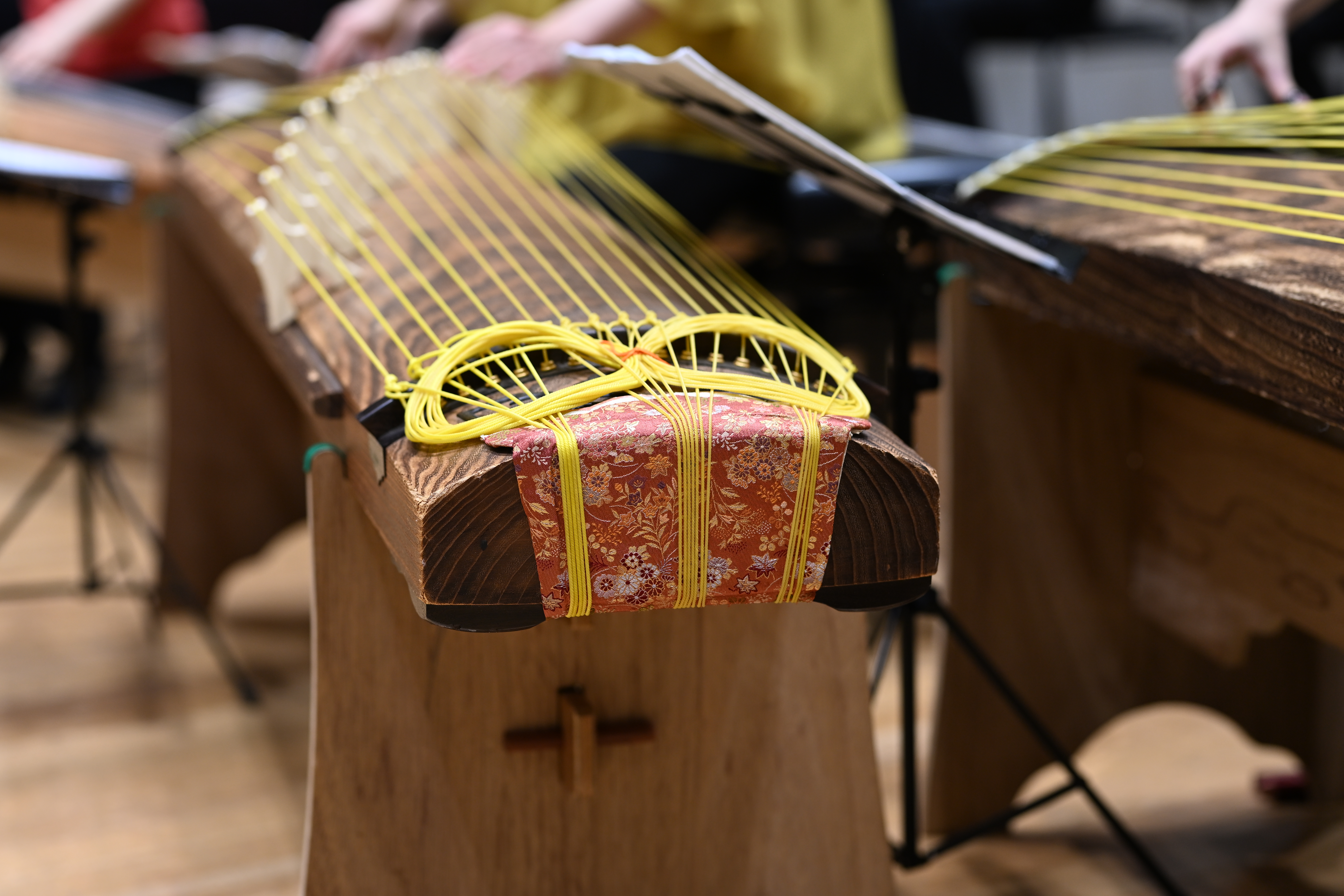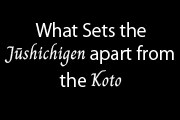
十七弦 jushichigen

While traditional kotos have 13 strings, the koto called a jūshichigen (lit. 'seventeen strings') was invented by Miyagi Michio in the Taisho era to play the role of a bass instrument in ensembles. In modern times, it has been widely adopted across all of the various koto schools, and quite a few solo pieces have been composed as well.
Not only has the number of strings increased, but the thickness of the strings and the overall size of the instrument have also increased. Early on, there were distinct 'large' and 'small' types of jūshichigen, but nowadays the most common ones are around 210cm in length.
Some also have an 18th string added, but these are still referred to as a jūshichigen. Note that when the word jūshichigen is used as a proper noun, the character for gen (string) should be 絃, but in this library we have used the simpler variant 弦 for consistency.
Episode






Performance and Explanation by Ishigaki Kiyomi and Morishige Yukitoshi
※ When musical notation is used in each episode, it is written in absolute pitch.
Music Library
Hotaru (fireflies)
Tadao Sawai; composed in 1980
This piece was inspired by Akiyuki Nosaka's novel Grave of the Fireflies. It tells the story of a young girl who meets a horrible death in a bomb shelter, and appears to be reincarnated as a host of fireflies. The song itself does not follow the story directly, but instead recalls the composer's outpouring of deep emotions.
Suna-no-Hama de (on a sandy beach)
Ishigaki Seizan I, composed in 1987
This piece collects the composer's memories of a happy summer day with his family, including the beauty of the sandy beach on the Chirihama Coast in Noto where he visited with his family and the cheers of children playing in the waves. It was premiered with the composer on shakuhachi and Ishigaki Kiyomi on jūshichigen.
